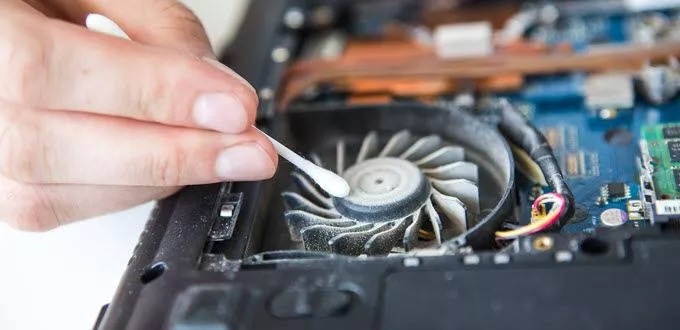Decoding the Symphony of Sounds: Understanding and Resolving Weird Noises Emitted by a Running Laptop

Introduction:
The rhythmic hum of a laptop’s fan or the occasional whir of its hard drive is a familiar backdrop for users. However, when a laptop starts producing unusual or weird noises during operation, it can be a cause for concern. This comprehensive guide aims to unravel the mystery behind strange laptop noises, exploring the potential causes, offering troubleshooting tips, and providing step-by-step solutions to help users identify and address these auditory anomalies.
Common Causes of Weird Noises from a Running Laptop:
- Fan Noises:
- Cause: The laptop’s cooling fan is a crucial component that prevents overheating by dissipating heat generated during operation. Weird noises, such as grinding, rattling, or high-pitched squeals, may indicate issues with the fan.
- Solution: Clean the fan vents to remove dust and debris. If the noise persists, the fan may be failing and may require replacement.
- Hard Drive Noises:
- Cause: Mechanical hard drives have moving parts, and unusual sounds like clicking, grinding, or repetitive ticking may suggest impending hard drive failure.
- Solution: Back up important data immediately. Consider upgrading to a solid-state drive (SSD) or replacing the failing hard drive.
- Optical Drive Noises:
- Cause: Laptops equipped with optical drives (CD/DVD drives) may produce noises during operation, but persistent grinding or clunking sounds could signal a malfunction.
- Solution: If the laptop’s optical drive is rarely used, consider disabling it in the BIOS/UEFI settings. If the noise persists, the drive may need replacement.
- Electrical Buzzing or Whining:
- Cause: Certain electrical components, such as the inverter or capacitors, may emit buzzing or whining sounds due to electrical fluctuations or component aging.
- Solution: If the noise is bothersome, seeking professional assistance to identify and replace the specific component may be necessary.
- Loose Screws or Components:
- Cause: Over time, vibrations and movements can cause screws or internal components to become loose, resulting in clicking or tapping noises.
- Solution: Carefully inspect the laptop for loose screws or components. If found, tighten or secure them appropriately.
- Faulty or Aging Fans in Power Supply:
- Cause: The laptop’s power supply unit contains a fan that may produce strange noises if it is faulty or nearing the end of its lifespan.
- Solution: Replace the power supply unit if the noise persists after cleaning and inspection.
- Interference from External Devices:
- Cause: External devices, such as USB peripherals or external hard drives, may introduce interference that produces weird noises through the laptop’s speakers.
- Solution: Disconnect external devices one by one to identify the source of interference. Consider using shielded cables or relocating devices.
Step-by-Step Troubleshooting Tips:
- Identify the Type of Noise:
- Listen closely to pinpoint the type of noise (clicking, grinding, buzzing, etc.) and its approximate location within the laptop.
- Check for External Factors:
- Ensure that the laptop is placed on a stable surface to minimize vibrations.
- Remove any external peripherals to isolate the issue.
- Monitor Temperature and Ventilation:
- Download temperature monitoring software to check for overheating, especially if fan noises are present.
- Clean the fan vents and cooling system to eliminate dust and debris.
- Inspect the Fan:
- Use the laptop’s built-in diagnostics or third-party software to check the fan’s performance.
- If the fan is accessible, visually inspect it for any physical damage or obstruction.
- Evaluate Hard Drive Health:
- Use diagnostic tools to check the health of the hard drive and identify potential issues.
- Back up important data and consider replacing the hard drive if necessary.
- Optical Drive Examination:
- If equipped, use the laptop’s diagnostic tools to test the optical drive’s functionality.
- If the noise persists, consider disabling the optical drive or replacing it.
- Power Supply Inspection:
- Inspect the laptop’s power supply unit for any visible damage or loose components.
- If the noise is emanating from the power supply, consider replacing it.
- Check for Loose Screws or Components:
- Carefully open the laptop (if comfortable doing so) and inspect for loose screws or components.
- Secure or tighten any components that appear loose.
- Update Drivers and Firmware:
- Ensure that all device drivers and firmware are up-to-date by checking the laptop manufacturer’s website.
- Outdated drivers or firmware can sometimes contribute to strange noises.
- Isolate External Interference:
- Disconnect external devices one by one to identify if any are causing interference.
- Use shielded cables and consider relocating external devices away from the laptop.
- Professional Assistance:
- If the issue persists after thorough troubleshooting, seek professional assistance from the laptop manufacturer or a certified technician.
- Professional diagnosis and repair may be necessary for more complex issues.
Conclusion:
In conclusion, the weird noises emitted by a running laptop can be disconcerting, but with a systematic approach to troubleshooting, users can often identify and resolve the underlying causes. Whether the issue lies with the cooling fan, hard drive, power supply, or external factors, the step-by-step solutions provided in this guide offer a comprehensive roadmap for users to regain control over their laptops’ auditory experience. If the problem persists or if users are uncomfortable with self-diagnosis and repairs, seeking professional assistance ensures a thorough examination and targeted solutions to address the root cause of the strange noises, ultimately restoring the laptop to quiet and reliable operation.




